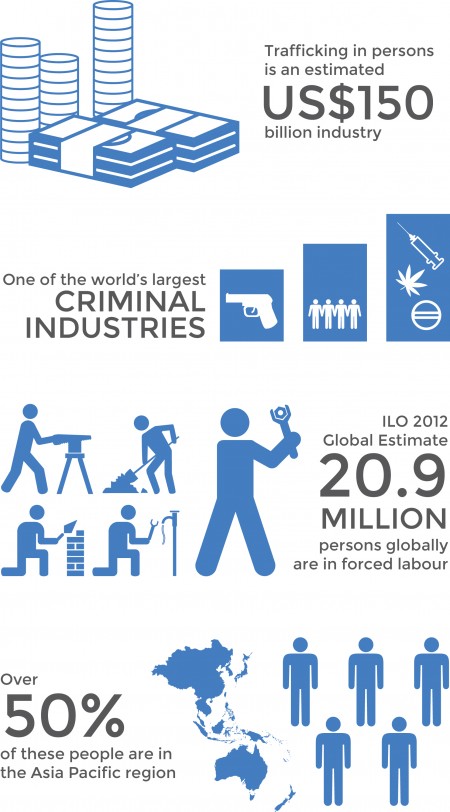Human trafficking constitutes one of the gravest forms of human rights abuses, whereby people are deceived or coerced into severe forms of exploitation.
Whilst prevalence and profits are difficult to quantify, the ILO in 2012 estimated that some 20.9 million people around the world are in conditions of forced labour, a form of exploitation closely related to human trafficking. A 2014 ILO research indicated that the related illegal profits are in excess of US$ 150 billion, making it one of the largest criminal industries in the world.
The Asia-Pacific region records an estimated 11.7 million people in conditions of forced labour, by far the highest figure of any region in the world. Within Asia-Pacific, the Greater-Mekong Sub-region (GMS: Cambodia, China, Lao PDR, Myanmar, Thailand and Viet Nam) features some of the most extensive flows of migration, forced labour and human trafficking.
Whilst human trafficking is a phenomenon of global reach, it often occurs intra-regionally with different regions and sub-regions experiencing distinct patterns. In the GMS, such flows are characterized by a strong cross-border dimension due to factors such as cultural linkages, traditional migration trends, long and porous borders, significant imbalances in socio-economic development levels, and at times conflict.
Human trafficking in the GMS occurs for a wide range of purposes, including forced labour in the fishing and seafood industries, in manufacturing, agriculture, construction, domestic servitude or begging; as well as for sexual exploitation or forced marriage.
The strong cross-border dynamics of human trafficking patterns in the GMS require a coordinated, regional response to the crime. It is on this basis that the United Nations Development Programme (UNDP) has developed the United Nations Action for Cooperation against Trafficking in Persons project, in short UN-ACT.

